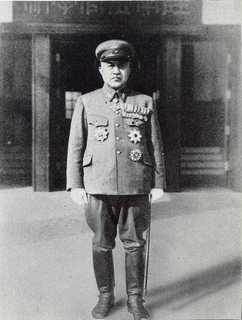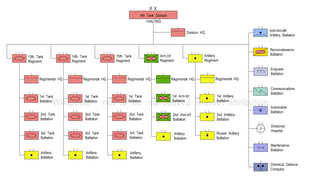China
1st War Area - Cheng Qian
- Eastern Honan Army - Hsueh Yueh
- 64th Corps - Li Han-huen
- 155th Division - Chen Kung-hsin
- 187th Division - Peng Ling-cheng
- 8th Corps - Huang Chieh
- 40th Division - Lo Li-jung
- 102nd Division - Po Hui-chang
- 74th Corps - Wang Yao-wu
- 51st Division - Wang Yao-wu
- 58th Division - Feng Sheng-fa
- 64th Corps - Li Han-huen
- 71st Corps Sung Hsi-lien (Song Xilian)
- 87th Division [2]
- 88th Division [2]
Reinforcements [May22nd]
- 17th Army - Hu Tsung-nan [Hu Zongnan - May22nd]
- 1st Corps - Li Tieh-chun
- 1st Division - Li Tieh-chun
- 78th Division - Li Wen
- 27th Corps - Kuei Yung-ching
- 36th Division [2] - Chiang Fu-sheng
- 46th Division - Li Liang-yung
- 200th Division (1st Column) - Qiu Qingquan
- Tank battalion *
- Infantry battalion
- Engineer battalion
- Armored car battalion
- Antiaircraft unit
- Motor maintenance unit
- Antitank battalion
- 1st Corps - Li Tieh-chun

Qiu Qinquan was a ROC Army general who excelled himself in Northern Expedition, anti-communist Encirclement Campaigns, Second Sino-Japanese War, and Chinese Civil War. In the Huaihai Campaign, which was determining battle of the Chinese Civil War, he failed to save General Huang Baitao's 7th corps and later committed suicide on the battlefield.
Note:
- * Tanks of the 1st Column's armoured battalion would have been equipped with new Soviet T-26 tanks. (There is some photographic evidence that there were some of the Italian CV-33 tanks there as well. One was photographed on the Lanfeng battlefield with three Japanese troops examining it. see photo and discussion http://www.china-defense.com/forum/index.php?showtopic=512)

The T-26 tank was a Soviet light infantry tank used during many conflicts of the Interwar period and in World War II. It was a development of the British Vickers 6-Ton tank and was one of the most successful tank designs of the 1930s until its light armour became vulnerable to newer anti-tank guns. It was produced in greater numbers than any other tank of the period, with more than 11,000 units manufactured. During the 1930s, the USSR developed 53 variants of the T-26, including flame-throwing tanks, combat engineer vehicles, remotely controlled tanks, self-propelled guns, artillery tractors, and armoured carriers. Twenty-three of these were series-produced, others were experimental models.


